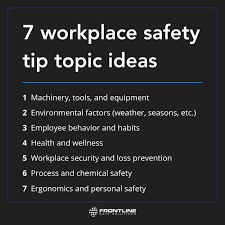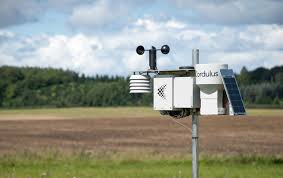The Importance of Fall Arrest Systems in Workplace Safety
Falls are one of the leading causes of workplace injuries and fatalities, especially in industries that involve working at heights. In order to protect workers from the risks associated with falls, fall arrest systems play a crucial role in ensuring their safety.
What is a Fall Arrest System?
A fall arrest system is a form of personal protective equipment designed to safely stop a person’s fall in the event they lose balance or slip while working at elevated heights. It typically consists of components such as harnesses, lanyards, anchor points, and connectors that work together to prevent a fall from resulting in serious injury or death.
The Components of a Fall Arrest System
Harness: A full-body harness distributes the force of impact across the body to reduce injury risk.
Lanyard: The lanyard connects the harness to the anchor point and absorbs energy during a fall.
Anchor Point: A secure anchorage is essential for supporting the weight of a falling worker.
Connectors: Carabiners or snap hooks link the harness and lanyard for secure attachment.
The Benefits of Using Fall Arrest Systems
- Prevents Falls: By quickly arresting a fall, these systems prevent workers from hitting lower levels or structures.
- Reduces Injuries: Properly used systems help minimize injuries by limiting the impact force on the body.
- Promotes Safety Culture: Implementing fall arrest systems shows a commitment to worker safety and fosters a culture of protection.
- Limits Liability: Employers who prioritize safety through these systems can reduce legal risks associated with workplace accidents.
In Conclusion
Fall arrest systems are essential tools for safeguarding workers at height and mitigating risks associated with falls. Employers must provide proper training on using these systems correctly and ensure regular inspections and maintenance to uphold workplace safety standards. By investing in fall protection measures, businesses prioritize their most valuable asset—their employees’ well-being.
Essential Fall Arrest Safety Tips: 6 Key Practices for Working at Heights
- Always wear a properly fitted full-body harness when working at heights.
- Inspect your fall protection equipment regularly for any signs of wear or damage.
- Ensure that your anchor point is secure and can support the required weight.
- Practice proper fall arrest techniques and procedures to minimize risks.
- Consider the length of your lanyard to prevent hitting the ground in case of a fall.
- Receive training on how to properly use fall protection equipment before starting work.
Always wear a properly fitted full-body harness when working at heights.
When working at heights, it is crucial to prioritize safety by always wearing a properly fitted full-body harness. A full-body harness provides comprehensive protection by distributing the force of impact across the body in the event of a fall. Ensuring that the harness fits correctly and securely is essential to maximize its effectiveness in preventing injuries and saving lives. By following this tip and using the appropriate personal protective equipment, workers can significantly reduce the risks associated with working at elevated levels and promote a culture of safety in the workplace.
Inspect your fall protection equipment regularly for any signs of wear or damage.
It is crucial to inspect your fall protection equipment regularly for any signs of wear or damage. By conducting routine checks, you can identify potential issues before they compromise your safety while working at heights. Inspecting harnesses, lanyards, anchor points, and connectors ensures that all components are in proper working condition and can effectively protect you in the event of a fall. Remember, a thorough inspection can make a significant difference in preventing accidents and ensuring the reliability of your fall arrest system.
Ensure that your anchor point is secure and can support the required weight.
To ensure the effectiveness of a fall arrest system, it is crucial to verify that the anchor point is securely fastened and capable of supporting the necessary weight. A strong and stable anchor point is essential for preventing falls and minimizing the risk of injury in case of a fall. By confirming the reliability of the anchor point before use, workers can have confidence in the safety and functionality of their fall protection equipment, ultimately enhancing workplace safety practices.
Practice proper fall arrest techniques and procedures to minimize risks.
To minimize risks associated with falls, it is crucial to practice proper fall arrest techniques and procedures. By ensuring that workers are trained in the correct use of fall arrest systems and follow established safety protocols, the likelihood of accidents and injuries can be significantly reduced. Regular practice and reinforcement of these techniques not only enhance workplace safety but also instill a culture of vigilance and preparedness among employees working at elevated heights.
Consider the length of your lanyard to prevent hitting the ground in case of a fall.
When using a fall arrest system, it is crucial to consider the length of your lanyard to prevent hitting the ground in the event of a fall. Choosing the appropriate lanyard length ensures that there is enough slack to allow movement while working at height but also limits the distance of a potential fall to minimize the risk of impact with the ground or other lower-level structures. By carefully selecting and adjusting the lanyard length based on the specific working conditions, workers can enhance their safety and reduce the severity of injuries in case of an unexpected fall.
Receive training on how to properly use fall protection equipment before starting work.
It is crucial to receive proper training on how to correctly use fall protection equipment before beginning work at heights. Understanding the functions and proper procedures for harnesses, lanyards, anchor points, and connectors is essential for ensuring the effectiveness of fall arrest systems. By being well-trained in the use of this equipment, workers can significantly reduce the risk of falls and injuries, ultimately promoting a safer work environment.




